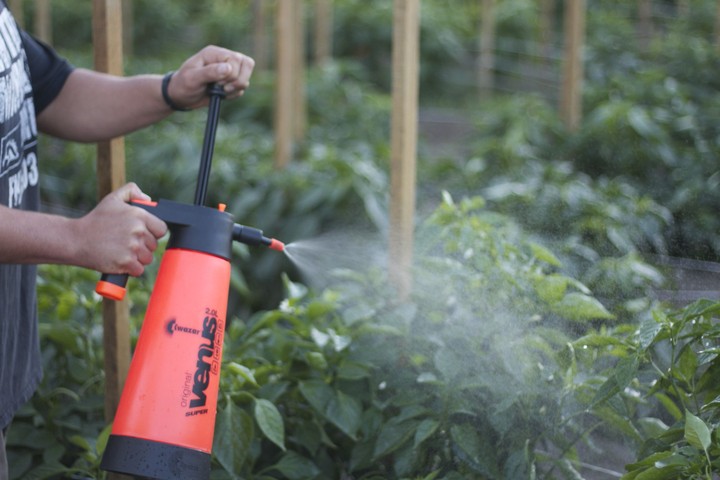How To Make Water Soluble Fertilizer At Home
Many organic farmers struggle to find natural means of enhancing their soil. While organic fertilizers are readily available, it makes more sense to produce them equally only so tin ane be sure of the components used. When produced accordingly, homemade organic liquid fertilizers tin can be as good as their commercially fabricated counterparts. At that place are different types of organic liquid fertilizer bachelor. For instance, compost tea is a powerful fertilizer while java grounds are said to provide sufficient nitrogen to plants.
A huge per centum of organic fertilizers are fabricated from kitchen waste matter. However, at that place are many more things one tin can convert into potent fertilizer for use in their organic garden rather than disposing them off.

Homemade Fertilizers
Organic farmers can make their own organic liquid fertilizer by infusing their components of choice in water for some days. The soluble nutrients then drain in the water solution.
Farmers tin choose to terminate the process and utilize the fertilizer in their gardens or fifty-fifty continue if they intend to ferment the component. Some farmers have reported groovy success from fermented organic liquid fertilizer.
DIY Organic Liquid Fertilizer
Beneath are examples of organic liquid fertilizers y'all can brand at home:
1. Banana Peels
Assistant peels come with loads of potassium. Fertilizers that are rich in potassium are good for flowers and fruit plants. This, still, may not exist appropriate for leafage plants such as spinach and lettuce.
Use assistant peel organic liquid fertilizer on squash plants and tomatoes. In a stonemason jar, put the assistant peels, fill it with water, and cork it. Let it to sit for three days and utilize it on your garden.
2. Eggshell Fertilizer
Eggshells are rich in calcium and contain a pocket-sized pct of potassium. Vanquish them, put in a mason jar, and fill information technology with h2o. Let it sit for a week and use the water on your plants. Information technology is platonic for tomatoes and houseplants. Calcium helps prevent bloom-end rot.
3. Vegetable Cooking H2o
After boiling vegetables, do not dispose information technology off. Let it cool then dilute it with water. Use it on houseplants and at the organic garden. To avert the bad smell, use it all at once. This water is rich in vitamins that the vegetables lose during the cooking process.
4. Epsom Salts
Epsom salts contain sulfur and magnesium. In a gallon of water, add a tablespoon of Epsom salts. Put the mixture in a sprayer and use information technology on peppers, tomatoes, roses, and onions. Spray them two times a month.
five. Compost Tea
In a saucepan, begin past placing compost, followed by water and a chapeau. Ensure the bucket is not tightly locked. Allow information technology sit for i to 2 days and pour the h2o in a dissimilar saucepan. Dilute it in a ratio of one to ten and use the mixture in the organic garden.
6. Weed tea
Unseeded weeds tin be used to make fertilizer. Add grass clippings to make it richer. Grass and weeds contain nitrogen and the water accelerates its breakdown to brand the nutrients available.
Place grass and weed clippings in a 5-gallon container and add together water. Ensure the water goes slightly in a higher place the components, cover and let it sit for iii days. Drain the liquid and dilute with h2o in a ratio of one to ten. Use it to water plants in the organic garden. Put the remaining components in the compost.
7. Droppings Tea
Collect chicken, rabbit, or goat droppings, put them in a saucepan and add together water until it's slightly above the debris. Allow it sit for two to three days and bleed the water. Dilute it with a one to 20 h2o ratio and use it to water plants in the organic garden. Droppings tea is rich in nitrogen.
Finally
Ensure that the plants are sufficiently watered before using an organic liquid fertilizer on them. This prevents them from absorbing excess salts. If the plants appear withered for lack of enough water, it is advisable to water them sufficiently kickoff and wait for xx-four hours earlier applying the fertilizer.
How To Make Water Soluble Fertilizer At Home,
Source: https://www.ecomena.org/liquid-organic-fertilizer/
Posted by: rowlandamited.blogspot.com


0 Response to "How To Make Water Soluble Fertilizer At Home"
Post a Comment